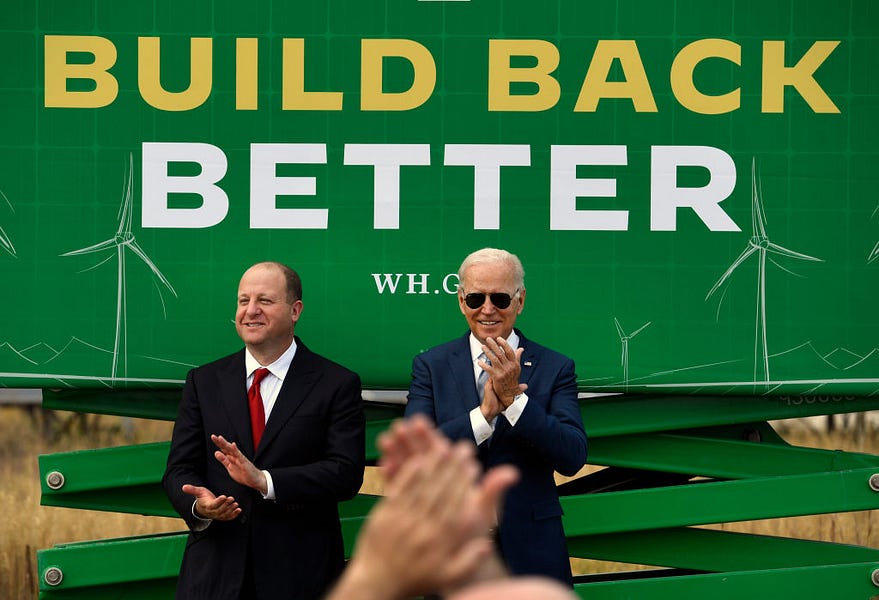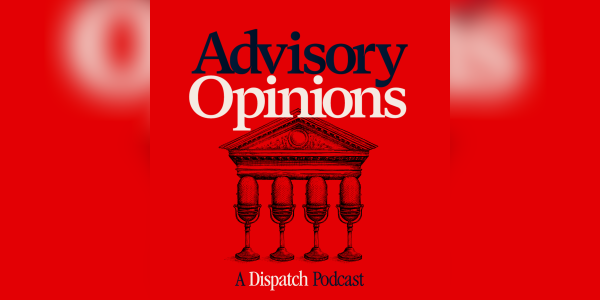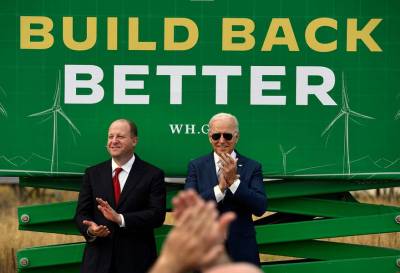Economists are attuned to our terms being bastardised by politicians. In the mouths of presidents and Congress, “investment” is widely used as a synonym for “spending.” “Infrastructure” today seemingly means any social policy Democrats think is worthy. A carbon tax was recently dubbed by White House spokeswoman Jen Psaki as a “corporate polluter fee.” And in the most shameless dictionary land-grab of all, President Biden, Nancy Pelosi, Ron Klain, and Psaki have repeatedly tried to redefine what we understand by the “cost” of the reconciliation bill—claiming that a $3.5 trillion bill actually costs “zero” dollars because it is fully “paid for” by tax increases.
Democrats are, in essence, saying that the “cost” of the overall package of spending and tax hikes is its net impact on the federal budget deficit. If a gross tax cut is $900 billion but there are offsetting provisions to raise revenue by $300 billions, we sometimes do say the net “cost” to the U.S. Treasury in forgone revenues is $600 billion. So, they contend, if there’s a $3.5 trillion spending package and $3.5 trillion raised in revenue to pay for it, isn’t the equivalent “net cost” of the package “zero dollars”?
That framework, if not the numbers, has convinced many journalists. In a “fact check,” the Washington Post’s Glenn Kessler has questioned Biden’s assertions on what the deficit impact will be. Some modeling from Penn Wharton has suggested the combined spending and revenue package would result in $1.75 trillion in additional borrowing over 10 years, Kessler says. But while Kessler rightly queried whether the reconciliation bill was truly deficit neutral, he didn’t question the president on whether the deficit impact really represented the bill’s “cost.”
Anyone who has ever bought anything knows that the “cost” of something is not the net effect on your debt balance. If you bought $85 worth of groceries and paid from your debit account, you wouldn’t claim the cost of the purchase was zero. If you spend $85 on groceries, that’s $85 less you have to invest, or to spend at the movies or in restaurants. Clearly, that out-of-pocket cost is real to you—it’s a reasonable proxy of the monetary value of what you give up to make the purchase.
In the same way, the $3.5 trillion reconciliation bill has a $3.5 trillion sticker cost to the private sector of the economy. Those funds have to be raised, either through taxation or borrowing, which in the long run is just taxation deferred. This “cost” will be even larger if some of the programs are extended permanently. So while the question of who bears the cost is complicated—potentially incorporating both current and future taxpayers—nobody should claim that this is a zero cost bill. It is going to have a vast cost to the market sector of the U.S. economy, in fact, because it significantly increases the government’s claim on private resources.
The precise overall economic “cost” of the package to the private sector is a bit more complex to calculate and likely to differ from this “sticker cost.” That’s because the true cost is the “opportunity cost” of this government spending to the private sector—the best alternative use of the funds forgone as a result of this package of spending, redistribution, and tax increases to finance it. To assess this, we would need to work out the broader impact of the programs on economic output.
When money is funneled into climate change investments, that uses up funds, workers, and machines that could have been put to use elsewhere, perhaps with higher returns given the evidence of past federal infrastructure boondoggles. And while spending on social programs transfers money from some taxpayers to other people—meaning no overall cost to the private sector—they require administrative outlays to run and create disincentives to work that, again, can lower output year after year.
In fact, some of the revenue raisers included in the package, such as the corporate tax hike, are regarded as particularly damaging for economic output, due to their deleterious impact on investment. This is a clear example of how something can show up as a supposed mitigator of “cost” to the deficit, while actually imposing very real costs on the economy.
Economists then might disagree on the precise overall economic “cost” of this agenda, given the uncertainties and disputes about the full impacts of the programs. They would agree, however, that the cost to the private sector is large and certainly not “zero.”
When Psaki first used this “zero cost” line, in fact, I thought it so outrageous—such a flagrant misuse of widely understood terminology—that it would backfire and blow up on the administration. Professional economists would surely all rush to man the barricades to defend this basic economic concept (and, to be clear, some Democratic-leaning academics did).
Yet the overall response was fairly muted. Biden’s framework seems to be sticking as a way of assessing the costs of the bill. This is dangerous to our broader policy debates, because the “cost of government” to us is not the annual deficit, but the overall claim on output that government spending has on the market sector.
In truth, we are seeing all sorts of weird things happening in the reporting of this process. Last week, for example, the Washington Post’s Jeff Stein talked about how Joe Manchin’s steadfast opposition to such a large spending package had led to White House aides contemplating “grueling cuts” to the bill. Only in Washington could trimming a massive proposed increase in government expenditure that hasn’t actually been implemented yet be described as “grueling” or a “cut.”
Here’s the bottom line. Models from the Tax Foundation and the Penn Wharton Budget model have suggested that the gross revenues raised to “pay for” this bill (counting new tax credits instead as “spending”) are likely to add $2.1 trillion to $2.4 trillion to the public coffers through the next decade, meaning (contra the administration) the deficit will likely worsen. When everything washes out, the Penn Wharton analysis suggests the package overall could add $1.75 trillion in debt, before interest costs.
But the true “cost” of the package to the private sector is not the same as the effects on the deficit, and should reflect the overall lost output owing to a much bigger government. The Biden worldview would suggest that even an expansion of federal spending to, say, 80 percent of GDP from its current 26.3 percent would have “zero cost,” provided tax revenues rose concurrently to the same level. Nobody would believe that—for it is absurd. Yet, somehow, the president is passing off his expansion of government as costless, and a lot of smart people are going along with it.






Please note that we at The Dispatch hold ourselves, our work, and our commenters to a higher standard than other places on the internet. We welcome comments that foster genuine debate or discussion—including comments critical of us or our work—but responses that include ad hominem attacks on fellow Dispatch members or are intended to stoke fear and anger may be moderated.
With your membership, you only have the ability to comment on The Morning Dispatch articles. Consider upgrading to join the conversation everywhere.